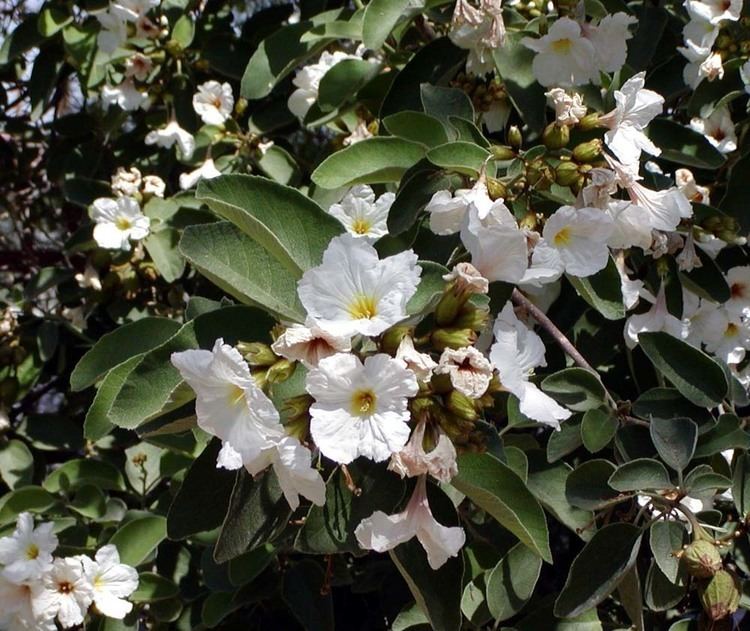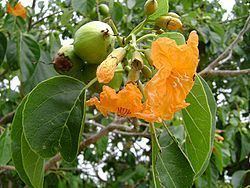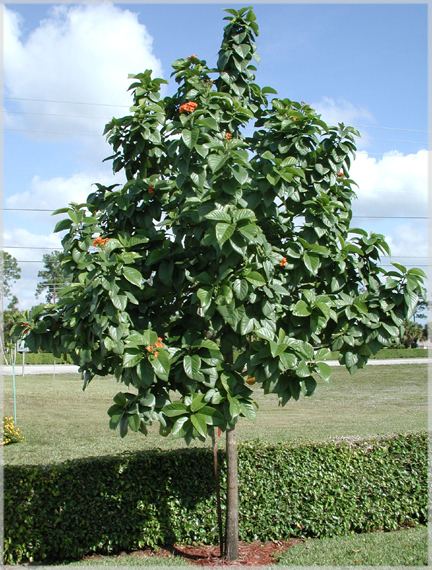Scientific name Cordia Rank Genus | ||
 | ||
Lower classifications Cordia alliodora, Cordia sebestena, Cordia dichotoma, Cordia myxa, Cordia dodecandra | ||
Cordia sebestena most beautiful of the west indian trees
Cordia is a genus of flowering plants in the borage family, Boraginaceae. It contains about 300 species of shrubs and trees, that are found worldwide, mostly in warmer regions. Many of the species are commonly called manjack, while bocote may refer to several Central American species in Spanish. The generic name honours German botanist and pharmacist Valerius Cordus (1515-1544). Like most other Boraginaceae, the majority have trichomes (hairs) on the leaves.
Contents
- Cordia sebestena most beautiful of the west indian trees
- Cordia obliqua clammy cherry
- Taxonomy
- Formerly placed here
- Ecology
- Ornamental
- As food
- Glue
- Wood
- References
Cordia obliqua clammy cherry
Taxonomy

The taxonomy of Cordia is complex and controversial. Gottschling et al. (2005) say this is partly due to "extraordinarily high intraspecific variability" in some groups of species, making identification difficult, and partly due to new taxa having been "airily described on the basis of poorly preserved herbarium specimens".
Formerly placed here
Ecology

Cordia species are used as food plants by the caterpillars of some Lepidoptera species, such as Endoclita malabaricus, Bucculatrix caribbea, and Bucculatrix cordiaella. The Wild Olive Tortoise Beetle (Physonota alutacea) feeds on C. boissieri, C. dentata, C. inermis, and C. macrostachya.
Ornamental
Many cordias have fragrant, showy flowers and are popular in gardens, although they are not especially hardy.
As food

A number of the tropical species have edible fruits, known by a wide variety of names including clammy cherries, glue berries, sebesten, or snotty gobbles. In India, the fruits of local species are used as a vegetable, raw, cooked, or pickled, and are known by many names, including lasora in Hindi. One such species is Fragrant Manjack (C. dichotoma), which is called gunda or tenti dela in Hindi and lasura in Nepali. The fruit of the Fragrant Manjack is called phoà-pò·-chí (破布子), 樹子仔, or 樹子(POJ: chhiū-chí) in Taiwan where they are eaten pickled.
Glue
The white, gooey inner pulp of the fruits is traditionally used to make glue.
Wood

The wood of several Cordia species is commercially harvested. Ecuador laurel (C. alliodora), ziricote (C. dodecandra), Spanish elm (C. gerascanthus), and C. goeldiana are used to make furniture and doors in Central and South America.
Ziricote and bocote are sometimes used as wood for making acoustic guitar backs and sides. Well-known guitarist Richard Thompson currently plays a Lowden F-35C RT Richard Thompson Signature Model with ziricote back and sides. Similarly, drums are made from C. abyssinica, C. millenii, and C. platythrysa due to the resonance of the wood.
